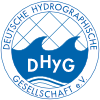HN Ausgaben wählen
- HN 132 (9)
- HN 131 (17)
- HN 130 (10)
- HN 129 (8)
- HN 128 (10)
- HN 127 (6)
- HN 126 (10)
- HN 125 (11)
- HN 124 (8)
- HN 123 (10)
- HN 122 (9)
- HN 121 (10)
- HN 120 (7)
- HN 119 (10)
- HN 118 (7)
- HN 117 (10)
- HN 116 (14)
- HN 115 (10)
- HN 114 (6)
- HN 113 (10)
- HN 112 (7)
- HN 111 (9)
- HN 110 (9)
- HN 109 (11)
- HN 108 (8)
- HN 107 (9)
- HN 106 (7)
- HN 105 (14)
- HN 104 (6)
- HN 103 (11)
- HN 102 (8)
- HN 101 (9)
- HN 100 (13)
- HN 097 (1)
Visualisierung von Gewässern – Status quo der wissenschaftlichen Behandlung
Eine wesentliche Aufgabe der Hydrographie besteht darin, die Gewässer darzustellen. Doch welchen Stellenwert hat diese kartographische Aufgabe? Wie die Gewässervisualisierung zurzeit wissenschaftlich behandelt wird, wurde durch eine systematische Auswertung der Fachliteratur und durch eine Umfrage unter Hydrographie-Experten ermittelt. Aus den Ergebnissen lassen sich Rückschlüsse auf künftige Forschungsaufgaben und auf den anstehenden Entwicklungsbedarf ableiten.
Hydrographie | Kartographie | Gewässervisualisierung | Marine Charting | Marine Cartography
- Ausgabe: HN 108 Seite: 6–9
- DOI: 10.23784/HN108-01
- Autor/en: Jochen Schiewe
»Hydrographers as surveyors and describers of all physics of the seas« – The inaugural speech by Mathias Jonas
- Ausgabe: HN 107 Seite: 44
- DOI: 10.23784/HN107-09
- Autor/en: Mathias Jonas
Vollversammlung der IHO in Monaco – Mathias Jonas wurde zum Generalsekretär gewählt
Vom 23. bis zum 28. April 2017 fand in Monaco die 1. Vollversammlung der Internationalen Hydrographischen Organisation (IHO) statt. Nachdem im letzten November wesentliche Änderungen in der Konvention der IHO in Kraft getreten sind, ersetzt die Vollversammlung (Assembly) die bisherigen IHO-Konferenzen als das höchste Gremium der IHO. Dort werden alle wesentliche Fragen zur Arbeit der Organisation behandelt sowie grundlegende technische und administrative Entscheidungen getroffen. Höhepunkt war die Wahl des Generalsekretärs und der beiden Direktoren am abschließenden Freitag. Dr. Mathias Jonas, Vizepräsident des BSH und Mitglied der DHyG, wurde mit deutlicher Mehrheit zum Generalsekretär gewählt. Damit bekleidet erstmals ein Deutscher die Führungsposition in der beinahe 100-jährigen Geschichte der IHO.
- Ausgabe: HN 107 Seite: 42–43
- DOI: 10.23784/HN107-08
- Autor/en: Thomas Dehling
Ein großartiger Physiker – Im Februar starb Dr. Siegfried Fahrentholz
Dr. Siegfried Fahrentholz trat nach seiner Promotion an der Christian-Albrechts-Universität zu Kiel in den Betrieb seines Vaters ein und befasste sich seitdem mit der Entwicklung und Herstellung von Vermessungsecholoten und Flächenecholoten auf Basis von vertikal lotenden Schwingern an seitlichen Auslegern von Messschiffen. Er war seit 1984 Mitglied in der DHyG und viele Jahre im Beirat und als Wahlvorstand tätig. Noch mit über 80 Jahren war er aktiv als Leiter des eigenen Unternehmens im Einsatz.
- Ausgabe: HN 107 Seite: 40–41
- DOI: 10.23784/HN107-07
- Autor/en: Brigitte Fahrentholz-Wilkening, Julia Fahrentholz-Starrost
»Hydrographie ist so aufwendig, sie darf nicht nur für einen Zweck da sein« – Ein Wissenschaftsgespräch mit Thomas Dehling
Als Leiter des Referats Seevermessung und Geodäsie am Bundesamt für Seeschifffahrt und Hydrographie (BSH) hat Thomas Dehling einen Job, bei dem er viel unterwegs ist. Sein Engagement im Capacity Building führt ihn in entlegene Gegenden. Was das Reisen mit ihm macht, verrät er im HN-Interview. Außerdem erläutert er, weshalb Seekarten echt preiswert sind. Und natürlich steht er auch in seiner neuen Funktion als Erster Vorsitzender der DHyG Rede und Antwort.
DHyG | DHyG-Anerkannter Hydrograph | DHyG Student Excellence Award | BSH | Capacity Building | IHO | IFHS | Wiederholungsmessungen | Seevermessungstechniker | Qualitätsmanagement
- Ausgabe: HN 107 Seite: 32–38
- DOI: 10.23784/HN107-06
- Autor/en: Thomas Dehling, Lars Schiller


